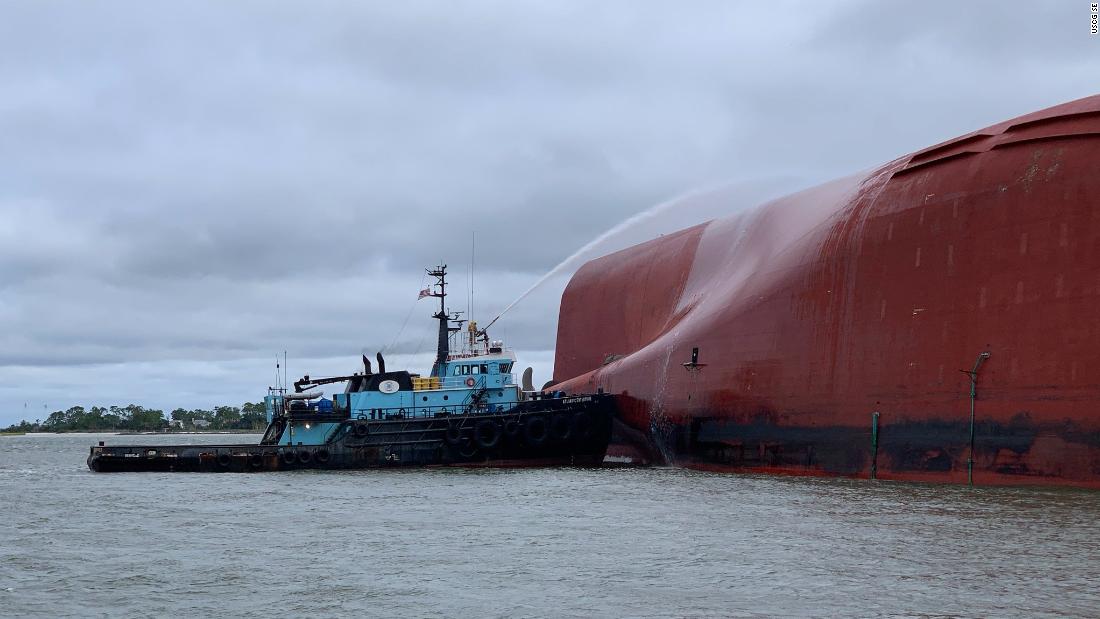
More than 320,000 gallons of oil and water mixture were removed.
To improve stability of the wreck, crews are now working to remove the propeller, propeller shaft and rudder, which weigh a total of approximately 130 tons.
"Due to the vessel's orientation on its side, these components are creating a load which the vessel was not designed to support. Imagine holding a milk jug with an outstretched arm compared to the same weight hanging at your side. Removing these components will help reduce the stresses on the hull," said Chief Warrant Officer Jeremiah Winston, director of the Unified Command Salvage Branch.
Plans are now being considered for construction of an environmental protection barrier and removal of the wreckage. An approved plan has yet not been selected.
The 656-foot vessel has been resting on its side in shallow water in St. Simons Sound since September 8, when it listed heavily after leaving nearby Port Brunswick. The ship was carrying around 4,000 automobiles for export.
The St. Simons Unified Command team said in October it planned to disassemble the vessel and remove it from the water in sections once the fuel was removed.
The 24 people on board -- 23 crew members and one pilot -- were rescued in the days after the ship capsized.
No comments:
Post a Comment